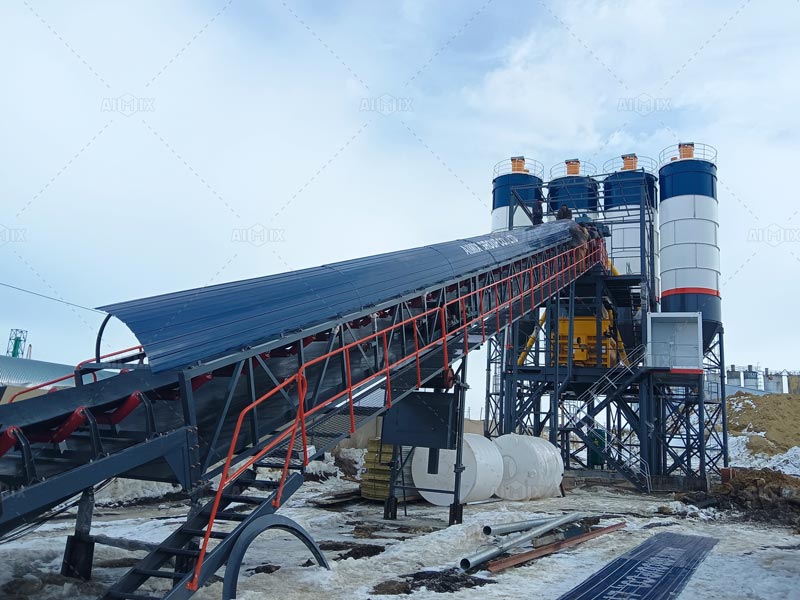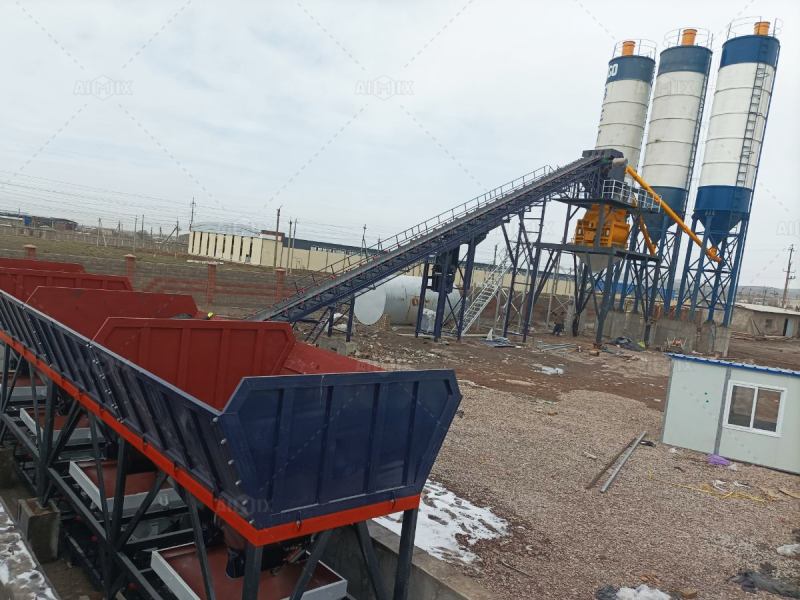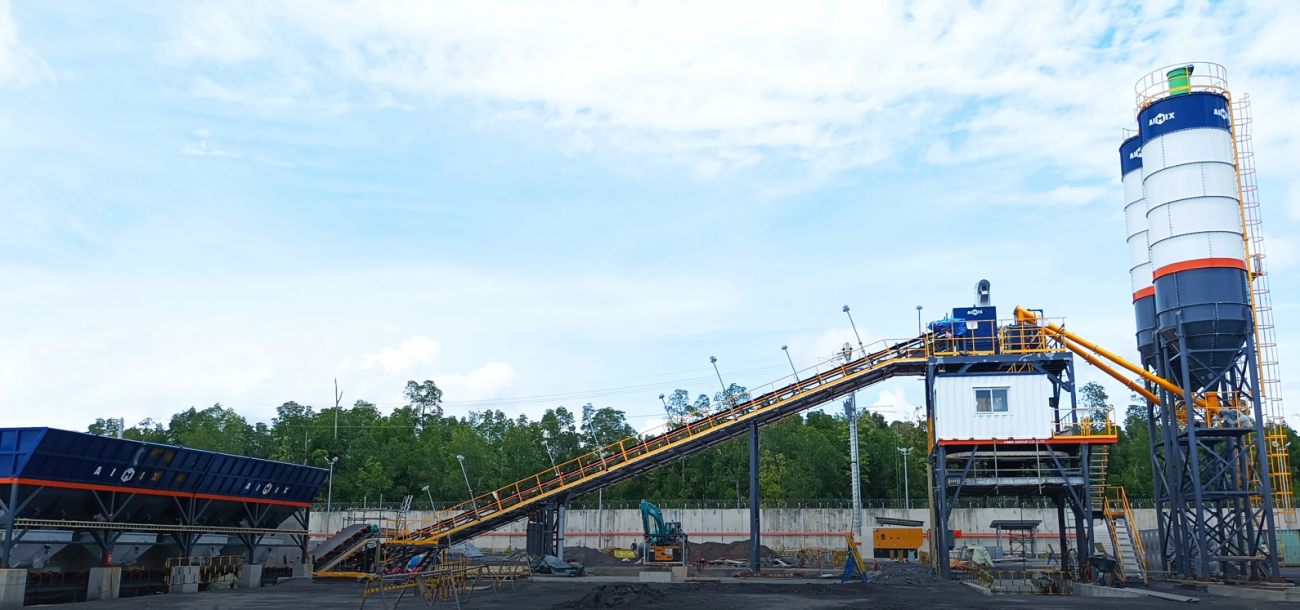The construction industry is under growing pressure to reduce carbon emissions and optimize energy use. A significant contributor to energy consumption is concrete production, particularly in ready mix batching plants. These facilities mix cement, aggregates, water, and admixtures to create consistent, high-quality concrete for a wide range of projects. Integrating energy-saving technologies into their operations not only improves sustainability but also helps reduce the overall ready mix plant cost. Additionally, companies planning their investment often ask critical questions such as how to set up a RMC plant efficiently while balancing capital costs and long-term savings.
This article explores key energy-saving technologies in ready mix batching plant operations, their financial and environmental benefits, and how they can be applied when establishing or upgrading a plant.

Energy-Saving Technologies in Ready Mix Batching Plants
Variable Frequency Drives (VFDs)
VFDs regulate motor speeds in equipment such as conveyors, mixers, and pumps. By adjusting motor output to match load requirements, VFDs can reduce electricity use by up to 30%. For batching plants that run multiple motors simultaneously, this translates into substantial long-term savings.
High-Efficiency Mixers
The heart of a ready mix batching plant is its mixer. New-generation planetary and twin-shaft mixers are designed with optimized blade geometry and advanced drive systems. These mixers achieve faster homogenization, reducing mixing times and overall energy use.
Automated Control Systems
Modern plants are equipped with programmable logic controllers (PLCs) and real-time monitoring software. Automation optimizes material proportions, reduces batch rejections, and minimizes idle times. The result is lower material waste and reduced power demand across operations.
Energy-Efficient Lighting and Auxiliary Systems
LED lighting and low-energy auxiliary systems—such as efficient compressors and water pumps—contribute to overall savings. While these may seem minor, the cumulative effect on a plant’s energy footprint is significant.
Recycling and Heat Recovery Systems
Plants can implement water recycling and cement slurry recovery systems to cut down on resource use. In colder climates, waste heat from generators or compressors can be reused to warm aggregates, reducing additional heating costs.
Integration of Renewable Energy Sources
Solar panels and hybrid energy systems are increasingly being integrated into batching plants. While the upfront investment is higher, renewable energy provides long-term operational cost stability and aligns with green construction policies.
How Energy Savings Reduce Ready Mix Plant Cost
Investors and contractors often view energy-saving features as optional, but in reality, they directly influence the ready mix plant cost over its lifecycle. Although advanced equipment may have a higher initial price, the reduction in energy bills and lower maintenance costs often offset the investment within a few years.
For example, a plant with VFDs and efficient mixers may reduce electricity consumption by 20–25%. If electricity accounts for 15% of operational costs, these savings significantly improve profitability. Moreover, governments in many regions offer subsidies, tax credits, or preferential loans for businesses adopting energy-efficient technologies, further reducing effective plant costs.

How to Set Up a RMC Plant with Energy Efficiency in Mind
When learning how to set up a RMC plant, energy efficiency should be a core design principle from the beginning. Key considerations include:
Site Layout
Proper layout reduces conveyor lengths, minimizes material transfer, and decreases power needs. Positioning aggregate bins, cement silos, and mixers strategically improves flow efficiency.
Equipment Selection
Choosing high-efficiency mixers, VFD-powered conveyors, and automated batching systems ensures energy is used effectively. While initial costs are higher, lifecycle savings are significant.
Material Storage and Handling
Covered aggregate bins and insulated silos prevent unnecessary energy losses from moisture control or heating. Reduced moisture variation also improves batching accuracy, cutting down on rework.
Automation and Monitoring
Investing in a fully automated plant reduces human error, optimizes batching cycles, and provides real-time feedback on energy consumption. This allows operators to adjust processes instantly for maximum efficiency.
Environmental Integration
Considering renewable energy and recycling systems during setup reduces long-term costs and improves compliance with environmental regulations.
Case Example: A Mid-Sized RMC Plant Upgrade
Consider a mid-sized contractor who initially installed a basic ready mix batching plant. Rising electricity bills prompted an upgrade with VFDs, a high-efficiency twin-shaft mixer, and automated controls. Within three years, the contractor reported a 20% reduction in energy bills and a noticeable improvement in production efficiency. The savings not only covered the cost of upgrades but also reduced the ready mix plant cost per cubic meter of concrete produced.
This example highlights how energy-saving technologies create a strong return on investment while supporting sustainable construction goals.

Future Outlook: Energy-Smart Batching Plants
The future of ready mix batching plants lies in fully integrated energy-smart systems. These batching plants will combine advanced crushing and mixing technologies, renewable energy integration, AI-driven process optimization, and circular resource management. The goal is not only to reduce operational costs but also to position companies competitively in an industry increasingly shaped by sustainability requirements.
Conclusion
Energy-saving technologies in ready mix batching plants are no longer optional—they are essential for reducing operational costs, improving efficiency, and ensuring environmental compliance. From VFDs and advanced mixers to automation and renewable energy, these innovations directly influence the ready mix plant cost and provide long-term financial benefits.
For companies evaluating how to set up a RMC plant, incorporating energy efficiency from the planning stage ensures a competitive edge and sustainable growth. By adopting these technologies, businesses not only future-proof their operations but also contribute to greener, more efficient construction practices worldwide.